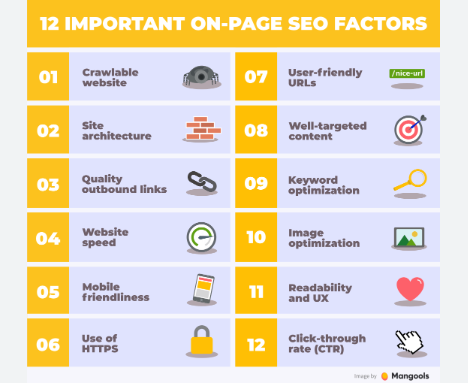How To Work On Page SEO:- Page SEO (Search Engine Optimization) is the practice of optimizing individual web pages to rank higher in search engine results pages (SERPs) and improve their visibility to users. Here are some steps to work on page SEO effectively:

How To Work On Page SEO
- Keyword research: Identify the target keywords that are relevant to your web page content and have sufficient search volume. Use keyword research tools like Google Keyword Planner, SEMrush, or Ahrefs to find the right keywords that your target audience is searching for.
- Create high-quality, unique content: Develop high-quality content that is original, informative, and valuable to users. Avoid duplicate content or keyword stuffing, as it can negatively impact your SEO efforts.
- Optimize title tags: Use unique and descriptive title tags for each web page, incorporating the target keywords. Keep the title tags within 60 characters to ensure they are displayed correctly in search results.
- Write compelling meta descriptions: Meta descriptions are brief summaries that appear below the title tag in search results. Write a compelling meta description that includes your target keywords and entices users to click on your web page.
- Use header tags (H1, H2, H3, etc.): Use header tags to structure your content and make it more readable for both users and search engines. Include your target keywords in header tags, especially in the H1 tag, which is the main heading of the page.
- Optimize URL structure: Use clean and descriptive URLs that include your target keywords. Avoid using long or complex URLs with numbers or special characters, as they can be difficult for users and search engines to understand.
- Optimize image alt tags: Use descriptive and keyword-rich alt tags for your images. Alt tags not only improve accessibility for visually impaired users but also provide an opportunity to include keywords for search engines to understand the image content.
- Internal and external linking: Use internal links to connect related pages within your website, and use external links to reputable and authoritative sources that provide additional value to users. This can help search engines understand the context of your content and improve user experience.
- Improve page load speed: Optimize your web page for fast loading times as it is an important SEO factor. Use tools like Google PageSpeed Insights to identify and fix issues that might be slowing down your page.
- Mobile optimization: Make sure your web page is responsive and mobile-friendly, as mobile optimization is crucial for SEO. Google prioritizes mobile-friendly websites in its search results, as mobile usage continues to increase.
- Social sharing: Make it easy for users to share your web page on social media by including social sharing buttons. Social signals, such as likes, shares, and comments, can indirectly impact your SEO efforts by increasing your web page’s visibility and engagement.
Remember, SEO is an ongoing process, and it’s important to regularly monitor and analyze your web page’s performance using tools like Google Analytics or other SEO analytics tools. By following these on-page SEO best practices, you can improve your web page’s visibility in search results and drive more organic traffic to your website.









